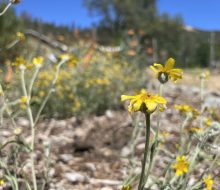At Sanctuary One, we talk a lot about care—care for the land, the animals, and each other. But what does that care actually look like?
This winter, I took time to reflect on the growing season and what it means to participate in a continuum of care—one that stretches across species, time, and space.
Harvesting More Than Food
Before I ever learned that “continuum of care” was a formal approach used in fields like healthcare, mental health, and community services, those three words kept visiting my restless gardener’s mind.
I had a full growing season behind me since joining the Sanctuary One team, and I was still digesting the harvest. That harvest didn’t consist solely of late tomatoes or winter squash maturing beneath giant leaves—but also the deeper, intangible fruits of our collective labor.
The value of a garden vegetable goes beyond weight or yield. More meaningfully: How sweet is it? How juicy? What’s the texture?
For an organization that integrates therapeutic and community-focused practices into agriculture, I began to wonder—what was the quality of our care?
How Does Care Feel?
How fruitful was our season for the interns? How experientially diverse for the service learning groups? How healing for the animals? How enriching for the gardens? How nourishing for the volunteers?
The best way to know is to ask.
As simple as that sounds, asking can easily fall through the cracks—ironically, in our very efforts to care. Whether it’s growing more food for the community, rehoming more animals, or hosting more groups, the human drive for “more” can echo the same productivity narratives we hope to soften and transform.
Slowing Down to Listen
A continuum of care asks us to build in the space to reflect: How is care working?
What does care mean for the puppy? For the group of sixth graders? For the staff? For the farm as a whole?
Both the asking and the answering require time. And so, we must slow down.
Otherwise, we may miss the answers. A perennial planted today may not bloom until next season. We are reaping the answer to a past question just as we sow more questions: What is care to you? And to you? What is care, in this moment, now?
Rooted in Past, Present, and Future
A continuum of care means thinking of time and space as expansive—beyond our individual immediacy. How does what we grow in our gardens affect the neighboring forest ecology? The soil microbiome?
This kind of care requires us to build systems with the future in mind: future gardens, future generations, future relationships—layered onto the work and wisdom of those who cared before us.
We might also reflect on the responsibility we hold to the present—to care for the particular plants, animals, and human kin around us—as a gift from past caretakers. We are the entrusted recipients.
Living the Continuum
As Sanctuary One continues to build relationships between people, animals, and the earth, we will find new and responsive ways to intertwine their stories—always with the understanding that care is a continuum. It spans species, seasons, and generations.
Care is a multiplicity, as diverse and alive as the farm itself.
-Jess Mealy, Earth Care Director


